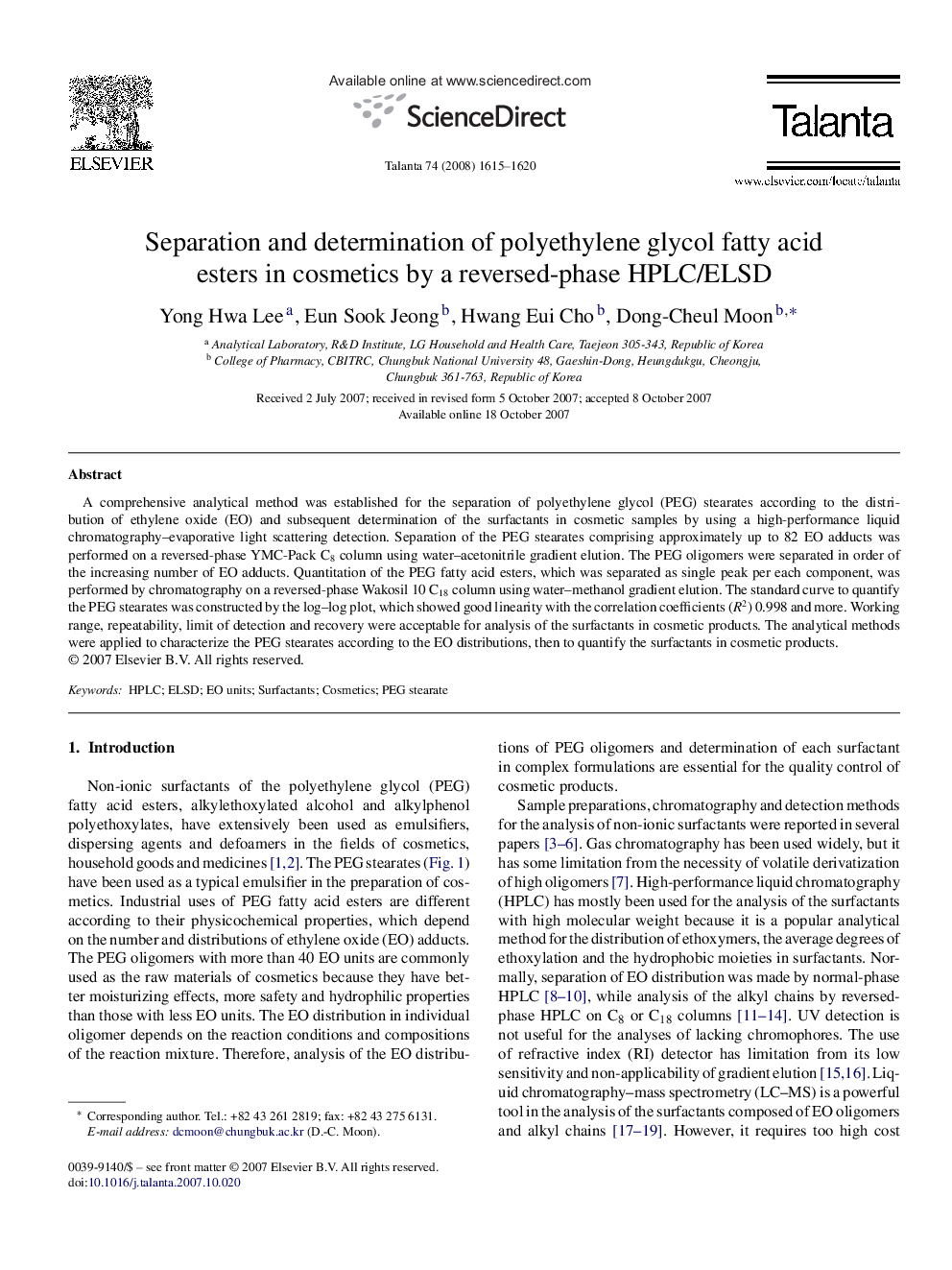| Article ID | Journal | Published Year | Pages | File Type |
|---|---|---|---|---|
| 1244563 | Talanta | 2008 | 6 Pages |
A comprehensive analytical method was established for the separation of polyethylene glycol (PEG) stearates according to the distribution of ethylene oxide (EO) and subsequent determination of the surfactants in cosmetic samples by using a high-performance liquid chromatography–evaporative light scattering detection. Separation of the PEG stearates comprising approximately up to 82 EO adducts was performed on a reversed-phase YMC-Pack C8 column using water–acetonitrile gradient elution. The PEG oligomers were separated in order of the increasing number of EO adducts. Quantitation of the PEG fatty acid esters, which was separated as single peak per each component, was performed by chromatography on a reversed-phase Wakosil 10 C18 column using water–methanol gradient elution. The standard curve to quantify the PEG stearates was constructed by the log–log plot, which showed good linearity with the correlation coefficients (R2) 0.998 and more. Working range, repeatability, limit of detection and recovery were acceptable for analysis of the surfactants in cosmetic products. The analytical methods were applied to characterize the PEG stearates according to the EO distributions, then to quantify the surfactants in cosmetic products.
